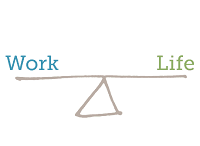Interview: Paul Robbins, STATS on the Potential and Challenges for Sports Analytics
We discuss Analytics at STATS, typical daily tasks, ICE Analytics platform, key challenges, response from coaches/players, career advice and more.
 Paul Robbins is currently the Director of Elite Performance for STATS LLC. He does program analysis and design based on live data tracking systems for professional team. He has just signed a deal with the NBA for all 30 teams and is currently developing new models for NFL, NHL and college sports.
Paul Robbins is currently the Director of Elite Performance for STATS LLC. He does program analysis and design based on live data tracking systems for professional team. He has just signed a deal with the NBA for all 30 teams and is currently developing new models for NFL, NHL and college sports.
His work comprises of real-time training loads for each athlete, development of performance training based on energy systems, working with media on new metrics for broadcasting, and working with coaches on performance programming based on game. He has developed the cardio programs and VO2 assessment programs for Athletes’ Performance and their new corporate division, Core Performance. STATS clients include thousands of professional athletes from the NBA, NFL, NHL, MLB and MLS.
Besides, Paul has also consulted for Intel and Google in the corporate market, and worked extensively with Adidas to develop the MiCoach. He holds MS in Kinesiology and Exercise Science from California University of Pennsylvania.
Here is my interview with him:
Anmol Rajpurohit: Q1. What role does Analytics play at STATS? What are some Analytics challenges that you face on a regular basis?
Paul Robbins: My role of Director of Elite Performance plays a very big part. My job is to analyze the SportVU data for the NBA performance staff. We are at the
 beginning of this process right now with only one full season. But over time this is going to be very valuable to all the teams. Right now we are just trying to collect as much good data as possible on player-level, not just game data. The challenge is in collecting the data at this time because the sensors for this market are so new.
beginning of this process right now with only one full season. But over time this is going to be very valuable to all the teams. Right now we are just trying to collect as much good data as possible on player-level, not just game data. The challenge is in collecting the data at this time because the sensors for this market are so new.
AR: Q2. What are the common questions that your clients ask while seeking consulting from STATS? What do you consider as the most important value delivered by STATS?
PR: Right now we are just looking at trends in the game data. Most teams are looking at ways to determine fatigue so they can manage the players over a long season. We are working on a fatigue index now.
AR: Q3. What does the ICE Analytics Platform do? What are its key sources of data?
PR:
 The platform just helps us look at any player very quickly. Every game is loaded in ICE by 8 am the next morning so I can get reports out to teams quickly. Main thing we are looking at right now is player loads, intensities and high end accelerations.
The platform just helps us look at any player very quickly. Every game is loaded in ICE by 8 am the next morning so I can get reports out to teams quickly. Main thing we are looking at right now is player loads, intensities and high end accelerations.
AR: Q4. Why is it so challenging to put together a full picture of athlete's performance through integration of data from various sources? Do we truly have all the data we need? If not, how should one manage missing data?
PR: The game is only 30-40 minutes of the player’s day- what is going on for the rest of the day? How did they sleep? How did the travel affect them? What did they eat? These are all issues to monitor- teams are working on their own solutions to these items now because every player and coach is different so there is no one plan that fits all.
AR: Q5. How do the players respond to the insights provided by STATS?
PR: For the most part I deal with the coaches and they discuss the data with the players- the coaches know what and who is interested in the data. They have the relationship with the players which is the most important element. A few players will ask me directly. They has been very positive and appreciate feedback on what they are looking for- what is important to them.

AR: Q6. What are your favorite use cases of SportVU data?
PR: Discussing conditioning (mainly low minute guys and off season) and recovery programs for starters.
AR: Q7. As you focus on performance and fitness, what are the big problems that interest you the most? Using Analytics, how can we maximize the performance of a player, while ensuring not to cross the fatigue level (leading to injuries or bad performance)?
PR: Understanding the outside demands on the player- their travel schedule is crazy and sleep/recovery is key. We need to look at the big picture.
AR: Q8. What are your thoughts on the current state of education for Sports Analytics? What do you see as the best way one can prepare oneself for a career in Sports Analytics?
 PR: I can only speak on the performance end of this industry- it is so new that just jumping in and looking at the data is very important. Play with it and put the sensors on yourself and understand what is it really showing you- and you must have a coaching background! You need to know how to look at it as a coach not just the numbers - How will you use this data in the weight room or on the court? How do you present it to the players and other coaches?
PR: I can only speak on the performance end of this industry- it is so new that just jumping in and looking at the data is very important. Play with it and put the sensors on yourself and understand what is it really showing you- and you must have a coaching background! You need to know how to look at it as a coach not just the numbers - How will you use this data in the weight room or on the court? How do you present it to the players and other coaches?
AR: Q9. Which of the current trends in Sports Analytics seem most exciting to you?
PR: We are just starting with performance data collection so that is enough to keep me busy for a while.
AR: Q10. How do you manage work-life balance?
PR:
 You have to enjoy what you do - I hang out with coaches (many I have known for years) and talk shop all day- it doesn’t free like work. I love to watch athletes perform so if watching games/practice is work…. well it is also a great life. I travel a lot but I work from home so I see my family a lot when I am not on the road.
You have to enjoy what you do - I hang out with coaches (many I have known for years) and talk shop all day- it doesn’t free like work. I love to watch athletes perform so if watching games/practice is work…. well it is also a great life. I travel a lot but I work from home so I see my family a lot when I am not on the road.
Related:
